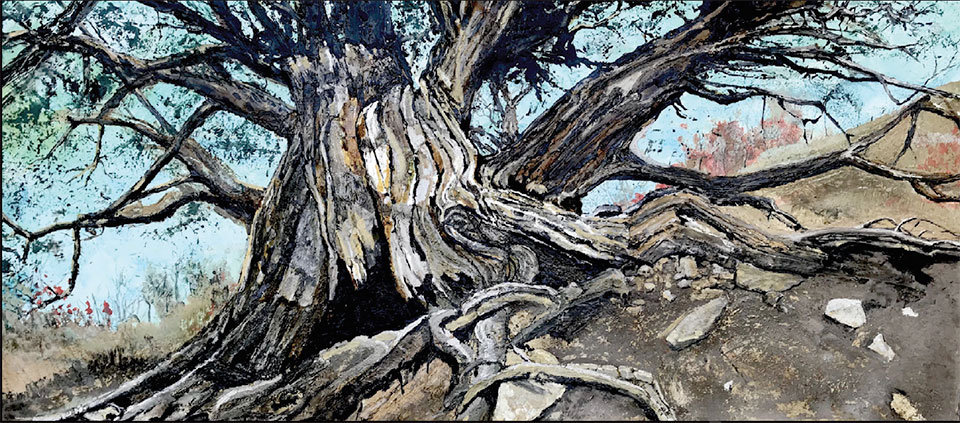Discover New Dimensions in Fine Art
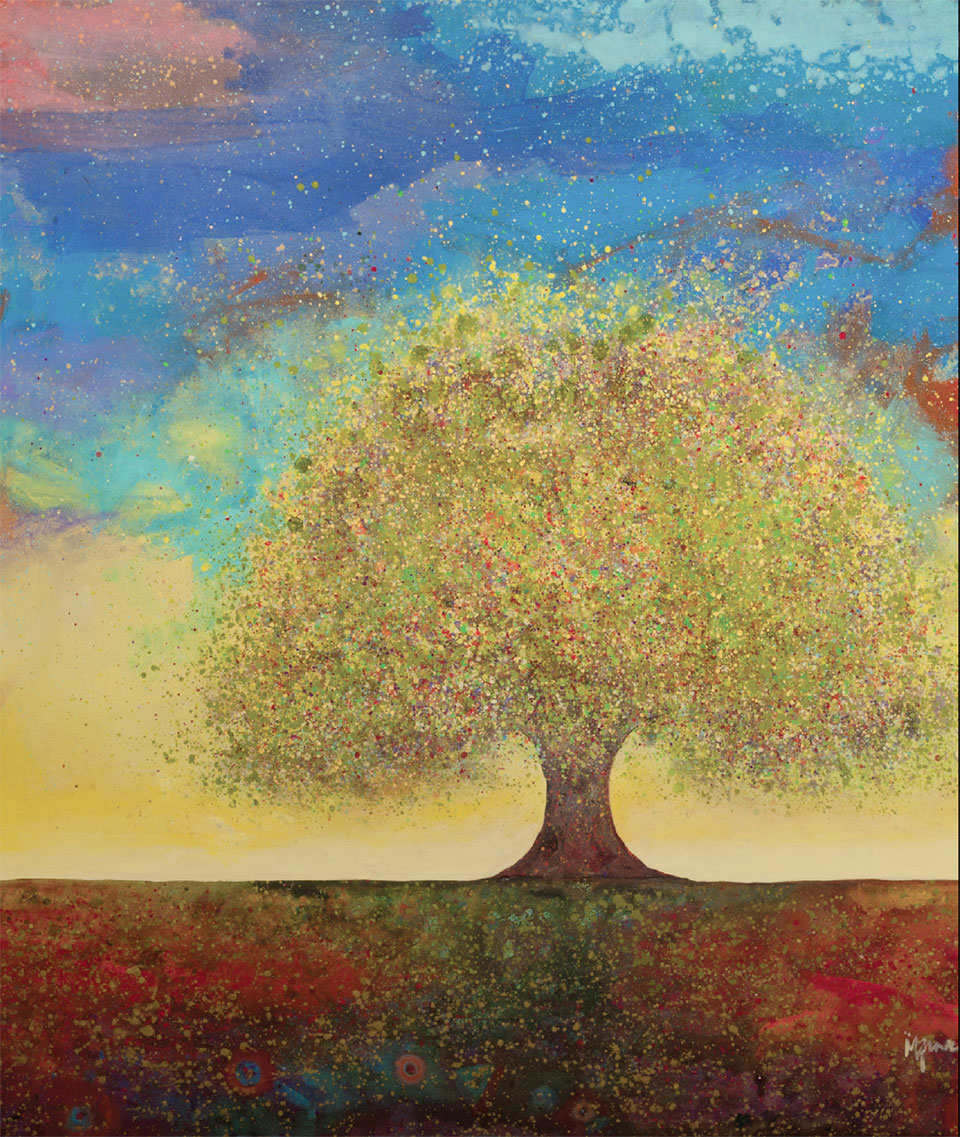
In this winter edition of Jackson Hole’s Western Home Journal, we celebrate the many mediums in which artists work, focusing on the artwork of painter Melissa Graves Brown, sculptor Miguel Edwards, and the decorative concrete sculpting and painting of Jon Nasvik. Melissa Graves Brown is a well-known western art painter whose devotion to painting trees has made her fine art a signature brand. As a symbol of life, her exuberant and beautiful trees are brilliant pieces, lighting up a room and giving joy to all who admire them. The dynamic steel sculptures of Miguel Edwards represent more than just contemporary works of art, with purposeful lines and curves; these collectible pieces are powerful but also have a softness within their color and shape. Combined with glass and other elements, Miguel’s fine art is unique and desirable. Offering an artform discovered through his own professional work with concrete, Jon Nasvik has broken all norms and given the medium a new life through his sculpting and painting. Infused with invention and a creative sensibility, Jon’s art is exciting and always challenging the eye of anyone who views it. Discover new pieces and the story behind the work of all three artists, as each one offers a new dimension to understanding fine art.
It’s a tree & it’s life’s work for Artist Melissa Graves Brown
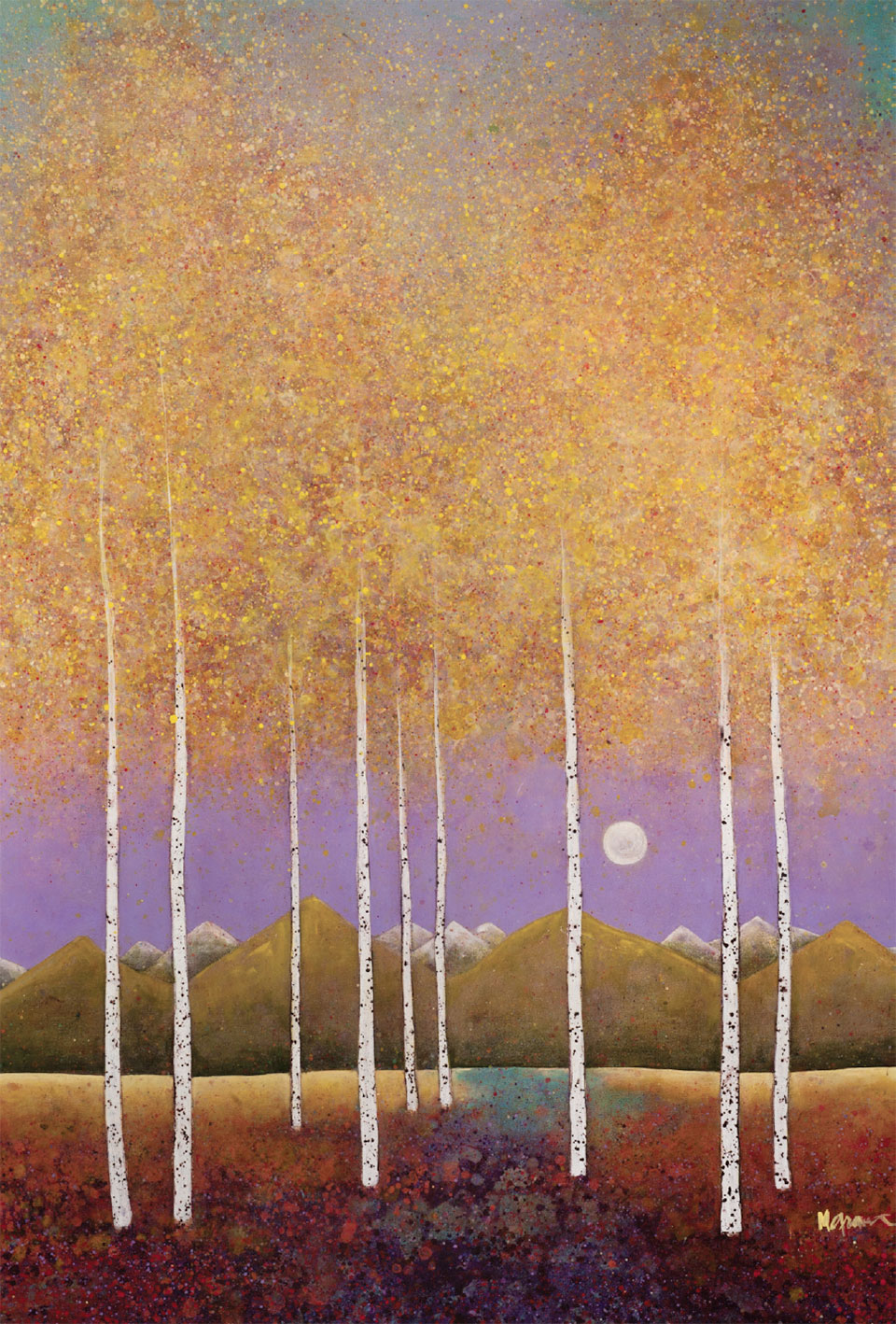
“What I have learned is that I can influence the way people feel. At the end of the day, I am so pleased to bring color and light into unique environments and homes—to make people happy. It’s why I’m here.”
–Melissa Graves Brown
With more than three decades of dedication as a painter, artist Melissa Graves Brown and her works are known throughout the country and sought-after for their collectability. Beyond the commissions, installations, and exhibitions, which span from East Coast to West Coast, Melissa’s trees have become a signature brand. Yet, the brand only presents one side of this multi-talented and multi-faceted fine artist. For Melissa, her trees are a symbol of life and represent an interpretation of our existence, and they are also a connection to the natural world, which is more delicate and more important than ever in the 21st century.
“I really love the physical paint itself, but it’s the process that I truly love—to create timeless landscapes that are reflective of aspects of life,” says Melissa. “My paintings are intentional yet accidental. They are organized, but also chaotic, colorful, and universal. My intention to conjure a daydream imagination or moments connected to nature are small escapes from our loud and busy lives.” As a vibrant and fantastical landscape artist, Melissa paints in her own unique style with a sensitivity to form—she wields her brush for every individual stroke with layers of washes and color to offer the viewer the ability to escape into her creativity.
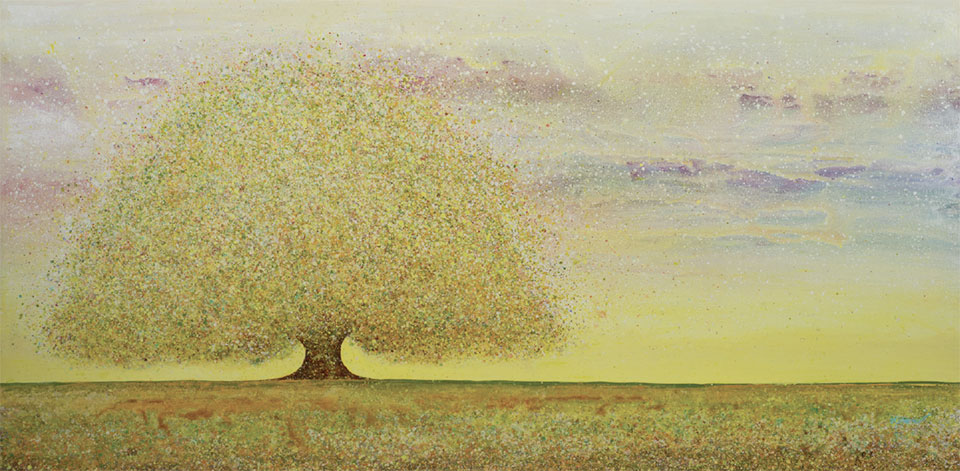
“I create my work with an emphasis on imagination and attention to Nature,” she says. “I paint mostly from a mind’s eye. However, I am inspired by the grand landscape of the West. I have been painting with a freshness, which is emotionally and intuitively driven; first thinking of color, then contrast as surface tones. I hope to capture the interest of the viewer with nuances and subtle layering of paint. Color remains my subject, only pushed into the shape of a landscape. Eventually, the painting takes on a life of its own.”
Melissa’s paintings present an array of trees including a blue moon grove or a red tree, and then there is the dreaming tree, which is where Melissa finds her ultimate existence. As she moves across and back and forth over each of her canvases, eventually they are all subject to her signature style of glistening sprinkles of colorful paint splatters and drippings. These are layers of yellow-golden dew drops or that moment when a quick bluster of wind whips up a pile of aspen leaves in a fury. The mystical and magical essence of Melissa’s paintings always offer a moment of pause.
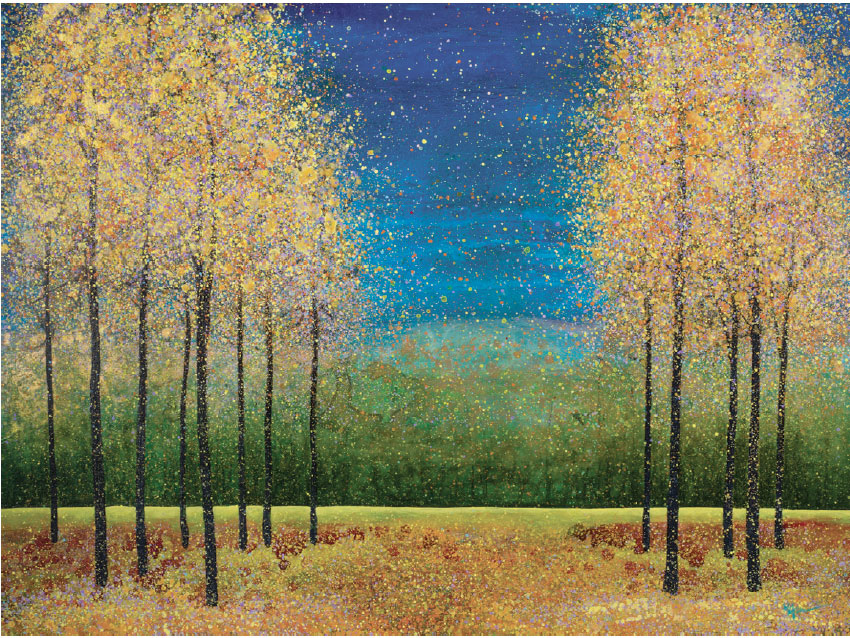
“What I have learned is that I can influence the way people feel,” says Melissa. “At the end of the day, I am so pleased to bring color and light into unique environments and homes—to make people happy. It is why I’m here.”
She has been voted by her community for the past ten years as its favorite local artist in the Wood River Valley, and she is known for donating large canvases, which are an integral part of many fundraisers and benefits to support her community. It’s no coincidence that a Melissa Graves Brown painting is part of these important events, which recognize people and philanthropic endeavors in the Wood River Valley. Melissa has chosen to live in the Valley for these reasons, and, for her, it is what makes it an incredible place to be an artist while she is raising her children with the values and love her paintings radiate.
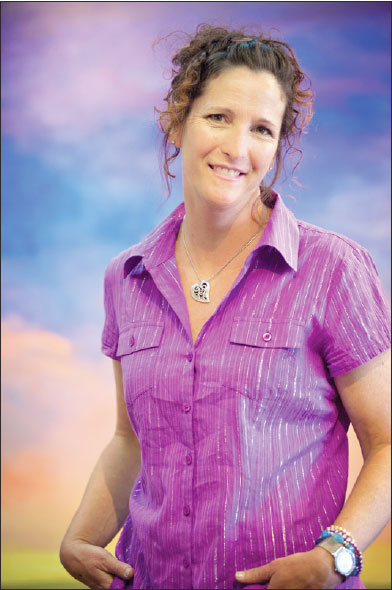
“I really love the physical paint itself, but it’s the process that I truly love—to create timeless landscapes that are reflective of aspects of life. My paintings are intentional yet accidental. They are organized, but also chaotic, colorful, and universal. My intention to conjure a daydream imagination or moments connected to nature are small escapes from our loud and busy lives.”
–Melissa Graves Brown
“The works I give are original paintings,” she says. “I value the non-profits to which I give donations, and it’s my way to contribute. I am able to connect with community, collectors, and those who have never seen my paintings. It’s pure joy to combine a heartfelt donation and fine art. My signal trees and groves are very popular in this arena. Fine art is desired by so many people, and it’s always of importance to connect with new people. It’s my drive to connect with people.”
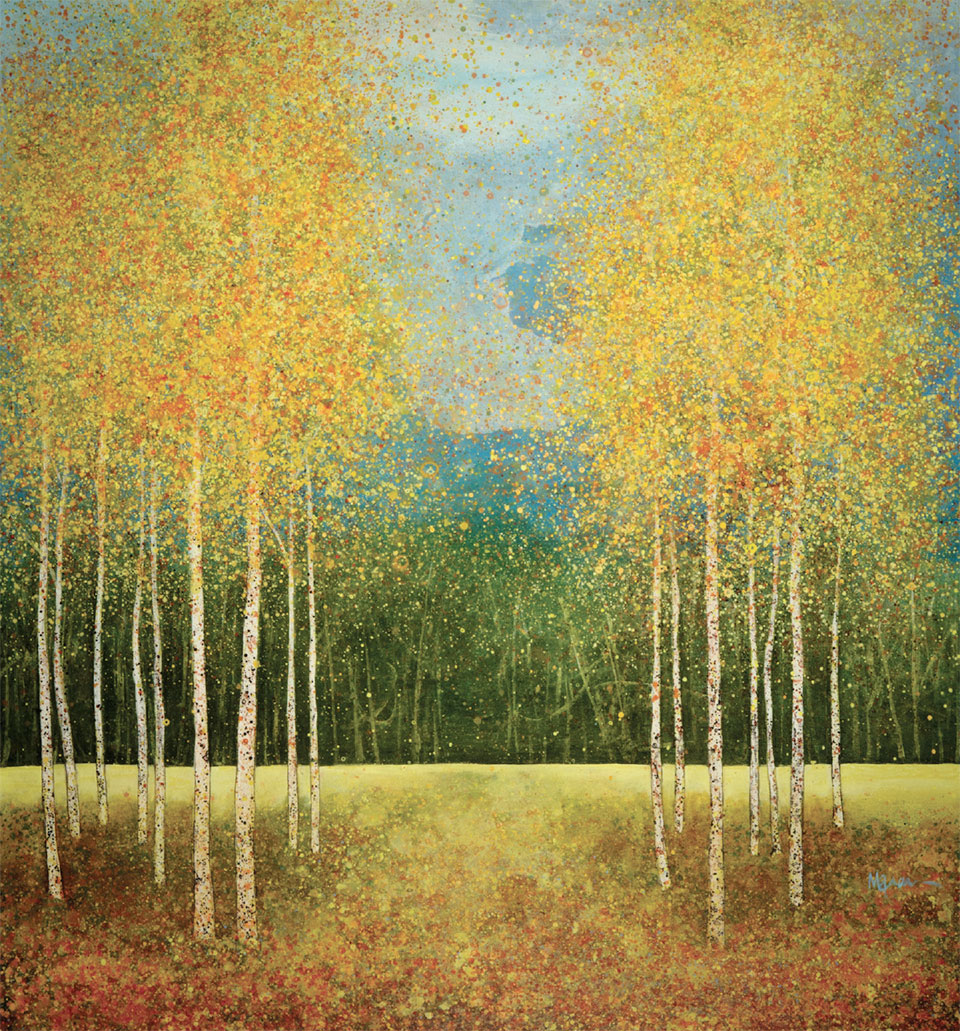
Married with two children, Melissa has been living and working as an artist in the Wood River Valley since 1999, sharing a studio with her husband Christopher Brown, who creates graphite pencil drawings.
melissagravesbrown.com
Form and Process Guide
The Fine Art of Miguel Edwards
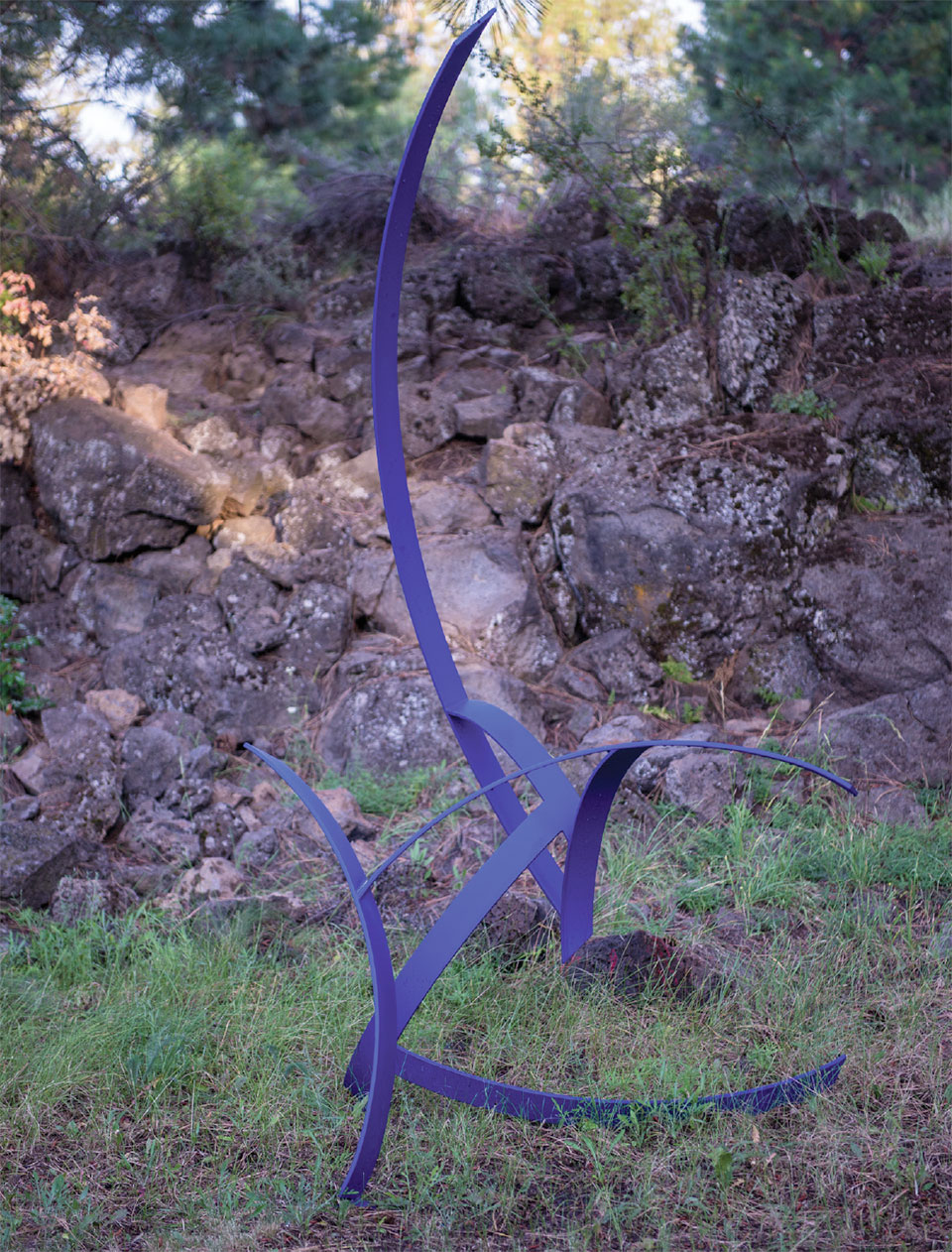
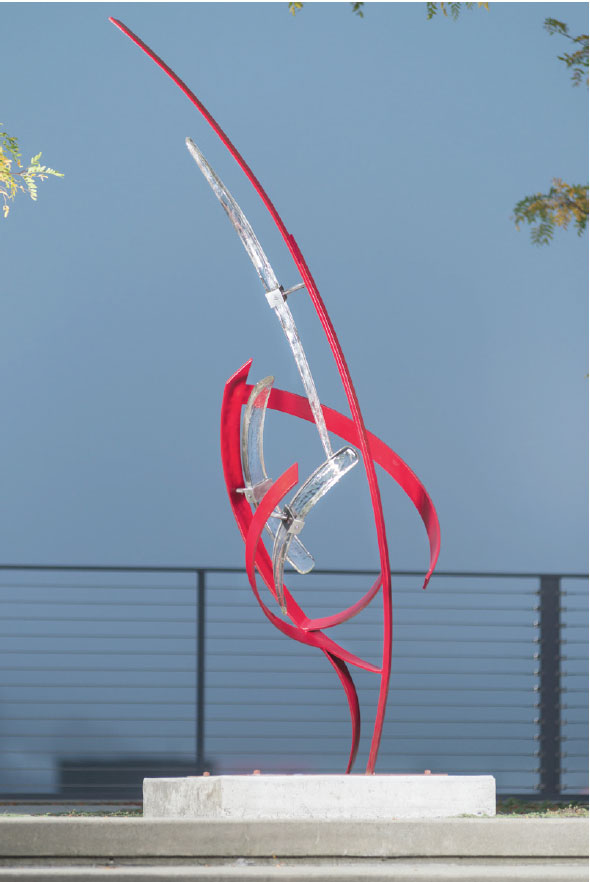
When contemporary sculptor Miguel Edwards moved to Bend, Oregon, from Seattle, he knew his art could be realized in more powerful ways, especially with a full-time home studio dedicated solely to his craftsmanship. Miguel’s work is gaining momentum across the country at serious speed and with his most recent steel sculptures, he has expanded his representation throughout the U.S. Recently, he signed with Coda Gallery in Palm Desert, California, which was named a top 25 for galleries in the U.S. and best gallery in California by American Art Awards, Havoc Gallery in Burlington, Vermont, and D Gallery in Carmel, California.
“Perhaps it’s my relationship to cold, dirty metal that keeps me going,” laughs Miguel. “I used to crank out work in limited time with limited space. Back then [in Seattle] I had a huge photo studio and tiny workshop up a steep flight of stairs. When the larger projects like Perseus II came, I struggled to find bigger locations in working warehouses that I could use after hours.” He adds, “But with my new studio, I’m able to take more time without the complications of shared spaces. I can now spend greater quality time developing my work, rather than juggling tools and workspace with others. I finally have the true studio practice that I have been chasing for years and it feels as good as I expected.”
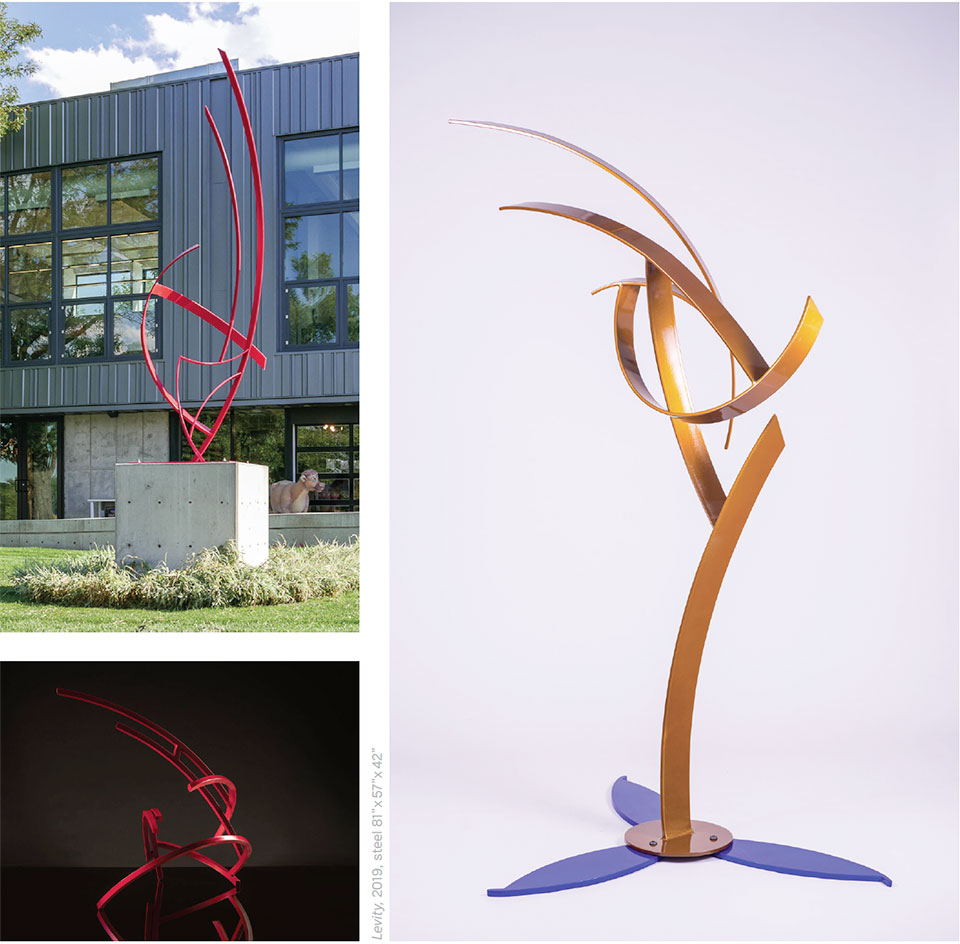
Edwards’ series of penumbra sculptures, the pieces of rolled flat bar, are pretty straightforward to build on the base level; it’s the nuances that take the time and experience. The steel is rolled cold, not heated in a forge, in either a plate or ring roller. Those pieces are then cut to desired lengths and welded together. The welds are then ground, sanded, and filed. This process continues to some level of diminishing returns. For years, much of this work required at least two people, depending on the scale. As of late, Miguel has figured out how to do it alone in his new shop with his ever-expanding tool collection, which is a breakthrough on many levels, though he still loves working with others.
Thanks to this new freedom and seismic, creative flow, Havoc Gallery founder, Bruce R. MacDonald, invited Miguel to show at Havoc Gallery at Context Art Fair in December 2019. Context, which is part of Art Miami, is celebrating its 30th anniversary. Art Miami maintains a preeminent position in America’s modern and contemporary art fair market and is globally recognized as a primary destination for the acquisition of the most important works from the 20th and 21st centuries.
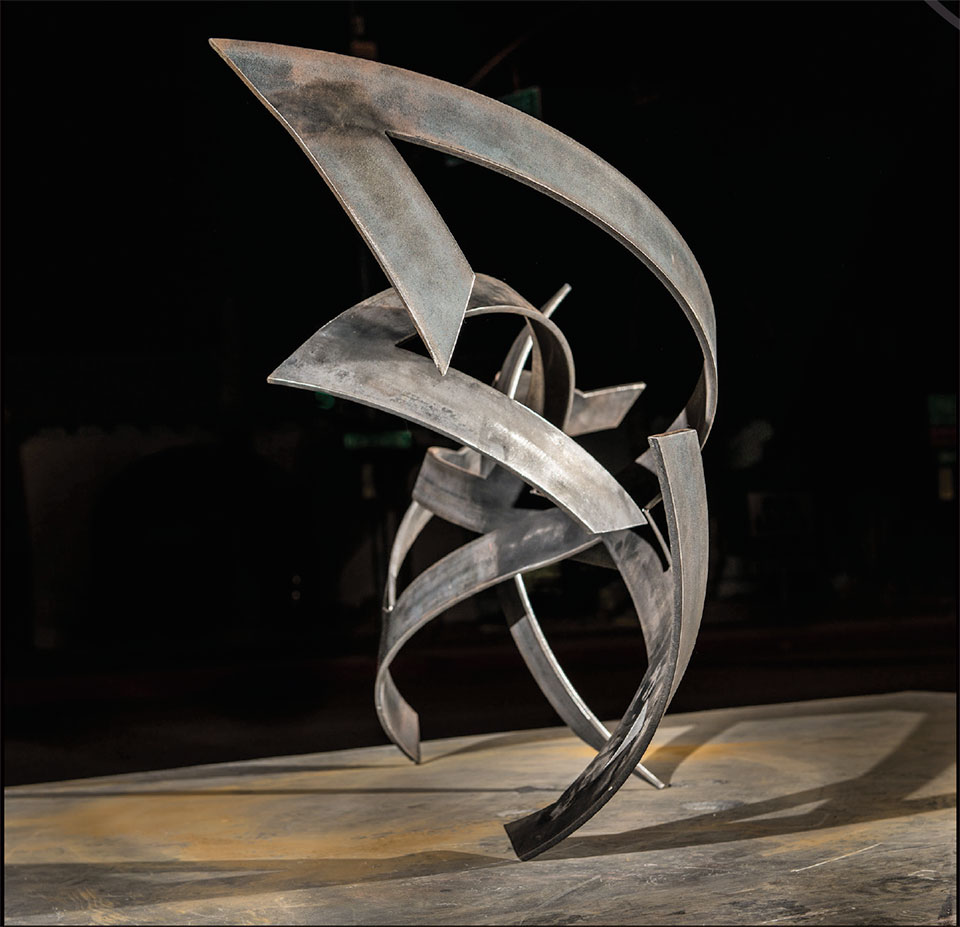
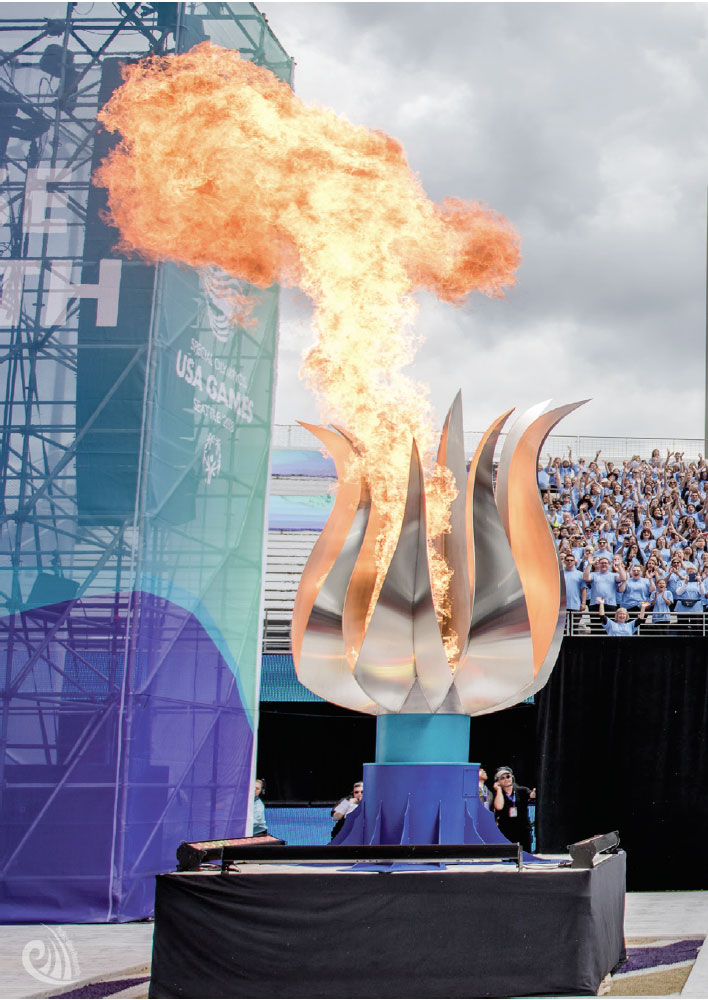
In addition to the upcoming Palm Desert and Miami shows, Miguel’s work is part of the Colorado Academy’s permanent collection for the Ponzio Arts Center, a visual arts education center. Without question, Miguel’s growing legacy is in demand, with more of his public works on display in the cities of Redmond, Oregon, and Ketchum, Idaho. Miguel also was awarded a commission for a large new sphere sculpture with glass and LEDs by the Seattle Ballet, for which he will be working with GGLO, a major architecture firm in Seattle, Los Angeles, and Boise, for the Center Steps Project. And just last year, Miguel was approached by Special Olympics and built “Hope Rising,” the cauldron for the opening ceremony in Seattle.
“When I create work that is beautiful and arresting to the viewer and that inspires them to simply pause and contemplate or perhaps to create or collect art, or even just ask a simple question, I feel I’ve done something worthwhile.” –
—Miguel Edwards
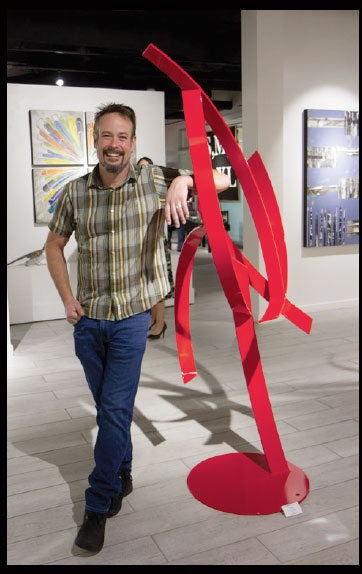
Miguel can make hardened steel dance. “I’m finding new places in my process,” he explains as he contemplates how physics applies to his work. “The first law of thermodynamics, also known as the Law of Conservation of Energy, states that energy can neither be created nor destroyed; energy can only be transferred or changed from one form to another. This, in the context of the human experience and how we make choices in life, is intriguing to me. It’s highlighted in my newest body of work. It’s a gritty, industrial process to transform cold-hard steel into fluid and seductive contours. Metal is heavy, sharp, loud, and cold, but how the forces of light and gravity interact with these materials allows me to bring to it a sense of calm and levity. When I create work that is beautiful and arresting to the viewer and that inspires them to simply pause and contemplate or perhaps to create or collect art, or even just ask a simple question, I feel I’ve done something worthwhile.”
Miguel has certain introspections relating to his work, saying, “I use beautiful and simple shapes, and I’m evolving as a craftsman. I want to leave behind occasional artifacts that were created by an authentic and industrial process, especially with how society is evolving to such a virtual world and things like 3D printing and virtual reality are becoming so prevalent. To me, everything about steel is exuberant: from its mineral smell to its varied texture, the way it behaves, and what it enables me to do. With the physical considerations of time, chaos, and intuition—these are my collaborators.”
migueledwards.com
Jon Nasvik’s Decorative Concrete Art:
Behold the Beauty
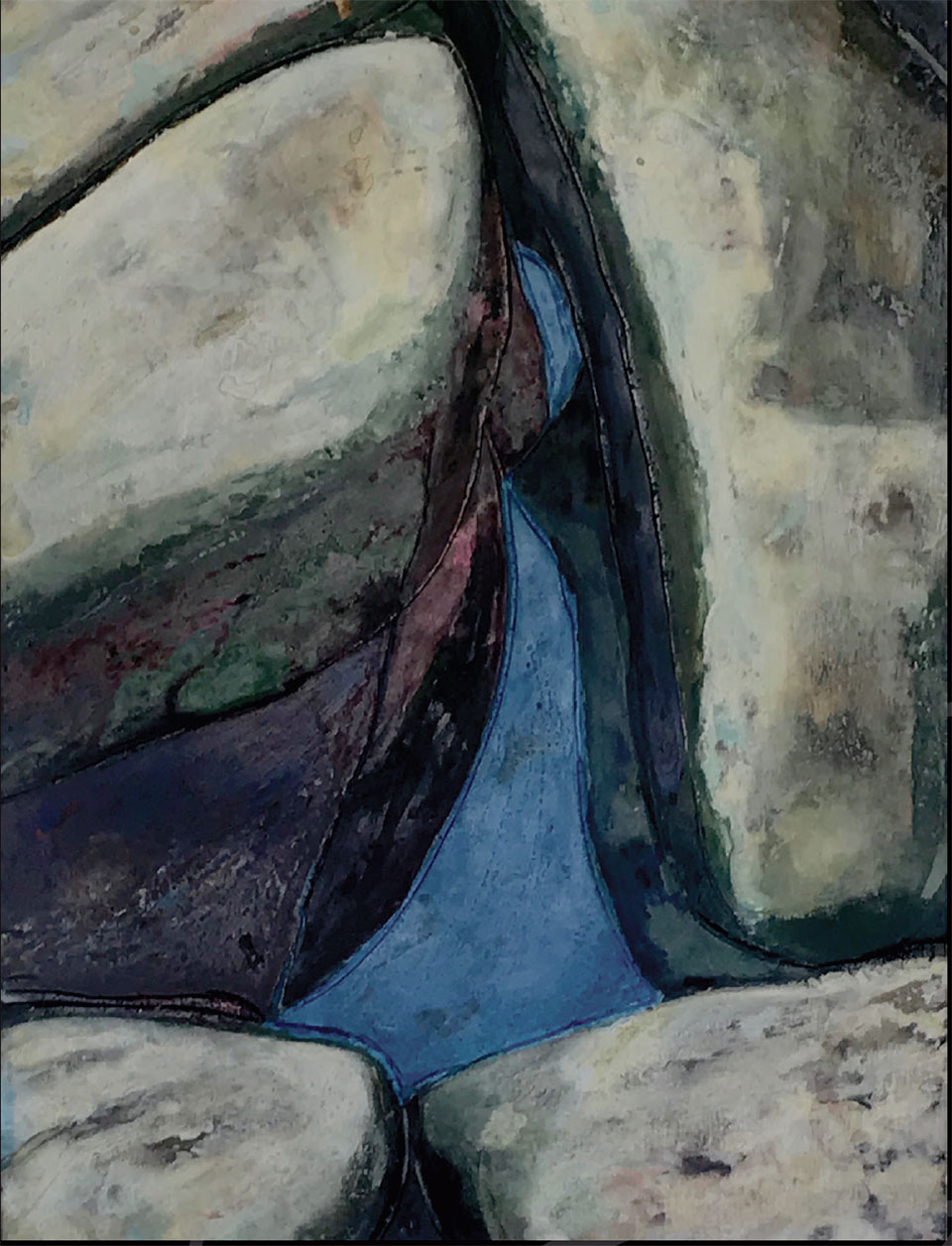
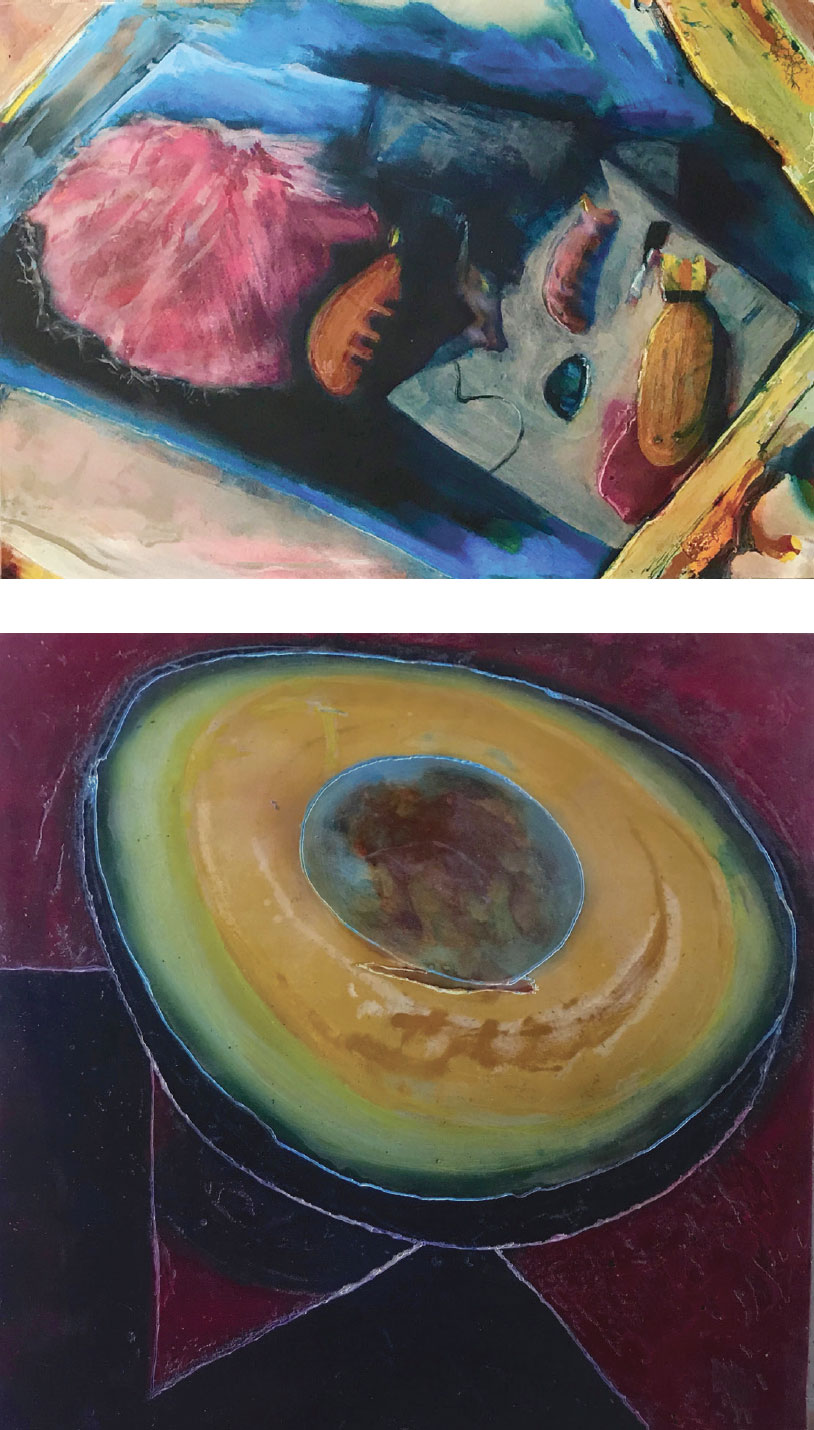
“What’s interesting to me is that I have learned more about the use of color and design in concrete work thAn I did in art school. And, surprisingly even to me, for such a cold, hard material, concrete offers a seemingly endless amount of movement & life to my artwork.”
–Jon Nasvik
If you enjoy the contemporary appeal of concrete as part of a home’s design, you might be interested to know that this ancient building material, deriving from ground limestone rock, can also be exquisite fine art. Sun Valley-based artisan and craftsman, Jon Nasvik, who formed Cliffhangers, Inc. 27 years ago to create functional and decorative uses for concrete, has been an artist as far back as he can remember. An expert and artistic craftsman, Nasvik is in constant demand for the growing number of design-oriented people who recognize the benefits and appeal of concrete.
For more than 50 years, Nasvik has been working in the decorative concrete industry creating functional, beautiful home concrete works and entities for inside and outside the home, including countertops, sinks, walls, floors, fireplaces, and water features. Recently, his use of this decorative concrete knowledge has evolved toward transitioning to studio art. The range of possibilities that this unusual art medium has to offer is intriguing. Nasvik is discovering through his imagination and abilities of working within the medium the seemingly endless possibilities concrete can offer his fine art experience.
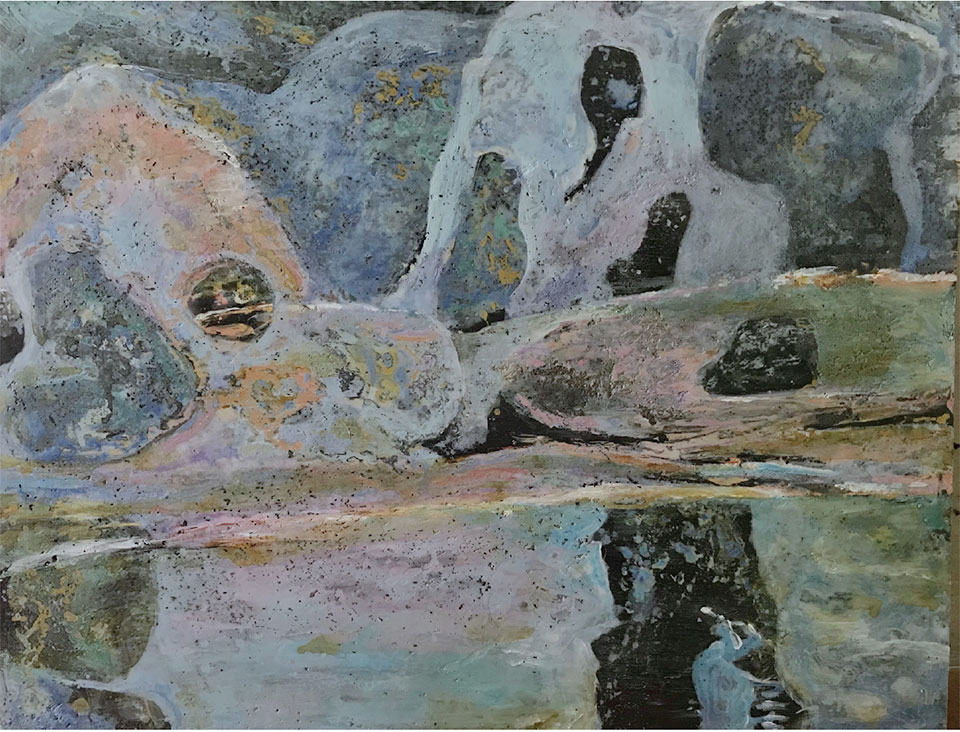
“It’s art that you can touch and feel,” says Nasvik. “It has a smoothness and/or texture. It’s solid concrete and durable but light enough to hang on a sheetrock wall when cast less than half of an inch thick. Depending on the angle it is viewed from, light will capture the patterns in these pieces, and break up in ways that change the character of the piece. This idea opened my head to evolving beyond painting on a flat plane. Why shouldn’t interesting things be happening depending on the light, and the goal I am trying to accomplish with it?”
It’s true. The work Nasvik puts into his concrete art will reveal different dimensions to the shapes and lines and colors—allowing ongoing exploration and discovery to the eye of the beholder. For this reason, Nasvik is carving and building when creating his concrete fine art pieces. Much of his work is created upside-down and he places actually colored cement, not paint, on a plastic sheet. It is a type of blind process. In another method, Nasvik will build up the colored cement layers, which is more like painting on a board, followed by grinding, chipping, and other methods to make the surface more interesting. Through these two different efforts, Nasvik is often finding new things in the process and, as he says, “I can push into the next piece, and it’s a neverending adventure that continues on toward new discoveries.”
Nasvik uses texture to interpret objects or items he depicts, allowing for changing light, and he’s now working toward more abstract pieces. “Most of the color you see in my work is the cement,” tells Nasvik. “I can apply tints, stains, and color-enhancing sealer as I see fit, to achieve a completed piece.” He adds that he’s noticing different effects along the way through the processes he uses, such as rippling, making more air pockets for definition, and several other practices that are allowing his imagination to explore the infinite possibilities of concrete for fine art. “It’s a new exploration. It is something that has not been tried. It’s fresh and different. The use of the material is fresh, and I have been doing this for over 50 years. I like creating works of art more than anything else I do. I really do think I have something to give with this work.”
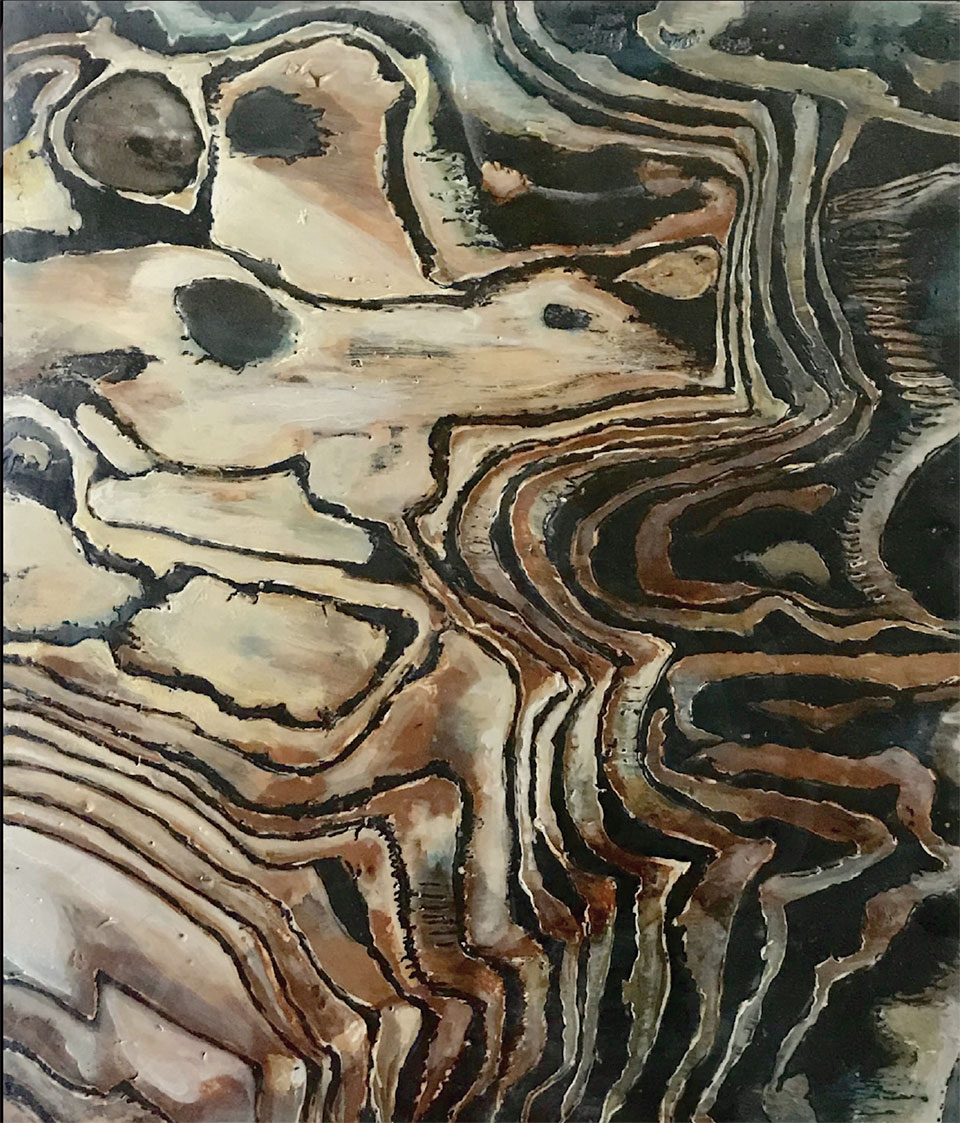
“It has a smoothness and/or texture. It’s solid concrete and durable but light enough to hang on a sheetrock wall when cast less than half of an inch thick. Depending on the angle it is viewed from, light will capture the patterns in these pieces, and break up in ways that change the character of the piece.”
–Jon Nasvik
Picking a color palette is most likely one of the most difficult components for Nasvik, but the process of always learning is very motivating and exciting to him. “Spontaneity, movement, and texture are things that I really enjoy about creating these art pieces,” he says. “What’s interesting to me is that I have learned more about the use of color and design in concrete work than I did in art school. And, surprisingly even to me, for such a cold, hard material, concrete offers a seemingly endless amount of movement and life to my artwork.”
To learn more about Jon Nasvik’s work: call 208.720.1367 or email noj@sunvalley.net.
